- Administrator
- Albums and Singles
 Robert Lowe might be recognized for his work with 90 Day Men and hisinvolvement with TV on the Radio. As a solo performer Lowe contacts thesublime and unspeakable, evoking masses of digital voices recorded fromwastelands, deserts, and temples.
Robert Lowe might be recognized for his work with 90 Day Men and hisinvolvement with TV on the Radio. As a solo performer Lowe contacts thesublime and unspeakable, evoking masses of digital voices recorded fromwastelands, deserts, and temples.The melodies and soundscapes thatemerge from the meshing of his guitar and processed vocals acknowledgesome eastern influence, but also fall somewhere within the Americanfolk tradition, wandering without being lost. The Psychic Nature of Beingbegs for a cerebral consideration of Lowe's music; the title of thesongs and the mood established within bubble over with philosophicaland mystical musings, each one equally appropriate for quietmeditation, writing, or sleeping. "Kirilian Auras," named after acontroversial photographic technique that claims to capture auras onfilm, begins with the moan of electricity and life, slowly escaping thelungs and distorting in the air, fractured into phrases and loops thatbeing to roll over one another. Soon Lowe adds his gentle guitar, itseems to mimic that vocal patterns crashing into one another, but italso offers a reference and a kind of solace in its easy rolling. Thecombination of his choral, digital sounds and his acoustic picking arehypnotizing, producing the image of rain falling, the soul escaping itsshell, or the long journey between unfamiliar cities, the rhythm ofwalking and observing in accordance with peace. At times the flow ofmusic sounds like the low piping of Japanese flutes and the whistle andbend of impossible instruments break over them, holding the compositionin place and freezing the moment of music in an unshakable lift. Thebrilliantly titled "You Are Excrement If You Can Turn Yourself IntoGold" closes the disc and offers a glimpse of the eastern world Lowesurely must've envisioned in the process of creating this album. Aguitar, played as though it were a gong being struck, tolls underneaththe trill and snap of a slippery melody. Softly the piece fades into anocturnal scene, populated by bells and the easy manner of eveningactivities. Lowe builds the song into an echoed mesh of melody, noise,and simple flucuations until its weaving body harmonizes as a constantin and of itself. Nothing could be removed or added from the song, asit stands it is the perfect picture of a misty landscape and doesnothing short of photograph peace as a movement. It isn't meant to begold, it's object isn't to be beautiful, but to be. Thus Lowe avoidsexcrement and utility and ascends to pure music, reaching for anessence and doing everything possible to represent it as something anyear will find familiar. It might be argued that drones have little elseto do but die away as a tried and true means of recording the ephemeralhappenings missed by so many, but Lowe's use of the constant sound issomething else; when his tones are stretched out, they do more thanjust provide a space for sound, they mix intimately with his moremusical work and create a sound that's entirely unique and far moredeserving of the association with old America and its story-tellingtradition than any other "weird" American outfit. In fact, the term"lichen" refers to symbiosis, relationships of mutual benefit. Toachieve the level of intimacy he has on this record without lyricsrequires a level of sophistication and nuance, and that is exactly whatLowe has done on his debut by mixing and considering two very differentworlds and finding that they aren't so distant.
samples:
Read More
- Administrator
- Albums and Singles
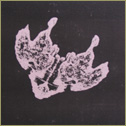 This beautifully-packaged limited edition CD-R sees Finland's A Way pitch four tracks against a single twenty-minute Jazzfinger epic. It's an evolutionary fact that even the collaborative spirit of split CD-Rs still leaves the listener with a winner and a loser; someone's going to end up being the b-side.
This beautifully-packaged limited edition CD-R sees Finland's A Way pitch four tracks against a single twenty-minute Jazzfinger epic. It's an evolutionary fact that even the collaborative spirit of split CD-Rs still leaves the listener with a winner and a loser; someone's going to end up being the b-side.Mallard Lake
While A Way's work here was recorded way back in late 2003 it still holds an intimate fresh appeal with its foggy strummed harmonics, underwater percussion, drones and inner ear clacking. It's pleasant enough listening even if the four tracks all pull from the same source moves and material, and even with this capable daub of autumnal hum over four offerings they're shunted into second place by the sheer glorious weight of Jazzfinger's "The Sun is my Enemy, the Wind is my Friend." Kicking off with what for a few seconds sounds like a corroded Slayer riff, the trio take a steadily stunning craggy drone and let it unwind, crackling feedback and bad electrics as it unspools into the sound of a constantly burning oppressive scouring Sun. Even when the ferocity fades a little with unexpected lulls the music still burns with a quiet fire and whether the elemental nature of the track is intentional or nothing more than imagination fired by the title the heat is palpable. But its not all blistering temperatures as influences of a more Middle Eastern / Indian nature show up in repeated melodic passages of spoiled notes. Skirting a
predictable structure these parts still move around the tightly strung higher end of the scale with considerable intent. A Way never really stood a chance.
- A Way - Around Under
- A Way - First Wind
- Jazzfinger - The Sun is Your Enemy, the Wind is Your Friend
Read More
- Administrator
- Albums and Singles
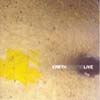 Obviouslytrying to reaffirm his status as the king of drones, Carlson has beenreleasing a steady stream of records this year. This is the second livealbum to be belched up this year and it is a patchy affair.
Obviouslytrying to reaffirm his status as the king of drones, Carlson has beenreleasing a steady stream of records this year. This is the second livealbum to be belched up this year and it is a patchy affair.
Sometimesit shines like a well polished Sunn amp and other times the sound is asdull as the stuff that Earth take their name from. Having never seenEarth live I have to wonder is there something missing from some of therecordings as they seem dreadfully hollow. Carlson’s guitar sometimessounds thin and lacks the menace of the studio releases. Instead ofbeing gut wrenching it is more of a nasal whine. However 070795 Live is a far better release than Earth’s other live album this year, Living in the Gleam of an Unsheathed Sword. The song “Dissolution III” appears on both albums but on 070796 Liveit has more vibrancy and sounds fuller, the previous release was tootinny to really get into the music. Unfortunately it still sounds likesomething is missing from the track. “Dexamyl” and the title track aremore like what I expect from Earth. It is the sound of a band flexingits muscles before delivering that punch that will knock down allpretenders to the throne. The remix (or reconstruction to use the linernotes’ parlance) of “070796” tacked on to the end of the album destroysall of its might and instead waters down Earth’s strengths. On Legacy of Dissolutionall the remixers hit the nail squarely on the head but James Plotkindeserves to be hit on the head himself. I would have thought he wasmore than suited to the job with his metal credentials but alas I waswrong. Had this album been released as a two track EP I would besinging Carlson’s praises and slapping the people at Autofact on theback but thanks to some awful remixing and poor sound on half the albumI am reluctant to go near any future releases of Earth’s live shows.Hopefully the forthcoming studio album on Southern Lord will allay myworries about Earth’s legacy.
samples:
Read More
- Administrator
- Albums and Singles
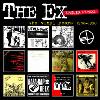 After nearly 30 years of defying the system, it seems that The Ex are ripe for a retrospective. This isn’t necessarily surprising, given the overwhelmingly positive response that greeted last year’s Turn.
After nearly 30 years of defying the system, it seems that The Ex are ripe for a retrospective. This isn’t necessarily surprising, given the overwhelmingly positive response that greeted last year’s Turn.Covering the early portion of their career, Singles. Period. focuses on exactly that. From 1980 to 1990, The Ex released a spate of vinyl-only singles that, as the liner notes suggest, hinted at what was to come on future albums. The chronological sequencing of this album proves beneficial, as The Ex develop from a sloppy, Oi-inspired band of rabble rousers to a precise, angular machine. Early singles like “Human Car” and “Stupid Americans” are rough hewn and amateurish. It seems that at this early stage, the band was very much inspired by the inflammatory spirit of the Clash and other early anarcho-punk bands like England’s Crass. These early singles are really only notable in that they place the evolution of The Ex in context. The first really great song here is “Weapons for El Salvador,” where the drumming is slowed to a marshal shuffle, and a stubborn guitar figure is repeated throughout. Meanwhile, vocalist G.W. Sok spouts lyrics seething with rage and discontent. The following track “Dust,” features guitar playing during the verses that is not unlike DNA or other no-wavers. “When Nothing Else is Helpful Anymore” features some truly inspired guitar playing while the rest of the band engages in a stubborn reggae jam. This song, along with the rest of the songs that formed the Gonna Rob the Sperm Bank single seem to be the first real peek into the future for listeners. Whereas earlier works aped the spirit of ’77 for both message and sound, this single found the band placing much more emphasis on rhythm and texture, something that would begin to inform much of the group’s later work. While many may question the point of a singles collection for this particular group, for the band’s fans it is a real treat. Many of these singles were out of print and nearly impossible to come by. While the music may be spotty at times, it is nonetheless worthwhile in that it showcases the evolution of a band who would go on to make some of the more confrontational and challenging punk rock of the 1990s.
samples:
Read More
- Administrator
- Albums and Singles
Petitions will be delivered to Congress starting Friday morning so senators and representatives will hear what you think the very next day.
Click here to sign the petition to demand an independent Katrina Commission.
Read More
- Gary Suarez
- Albums and Singles
Petitions will be delivered to Congress starting Friday morning so senators and representatives will hear what you think the very next day.
Click here to sign the petition to demand an independent Katrina Commission.
Read More
- Administrator
- Albums and Singles
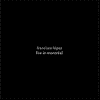 As a bigbeliever in sensory deprivation in pursuit of a better listeningexperience, Francisco López has gratiously included a blindfold with his latest one-track live CD. As criticalanalyses of blindfolds go, my review is damning.
As a bigbeliever in sensory deprivation in pursuit of a better listeningexperience, Francisco López has gratiously included a blindfold with his latest one-track live CD. As criticalanalyses of blindfolds go, my review is damning.
Alien8 Recordings
The flimsy materialof a blindfold does nothing to restrict vision apart from making things a littledarker. Dispensing with the blindfold I decided to just listen to theCD in the dark. What the piece of cloth does for blindfolds, Lopez doesthe opposite for music. Live in Montreal is mesmerising. A lowhum pervades the piece, creating an atmosphere of warmth and danger. Itsounds like heavy machinery working deep beneath the ground and indeedthe room tremors like there is something pulsing from below. Lopezinterweaves other hums and deep booms on top of the main sound, attimes I felt I was in a deep cavern and something was coming towards me(think of HP Lovecraft writing the scene with the trembling cup ofwater in Jurassic Park). When Lopez finally lulled me into somesort of security he releases the odd unpredictable clamour orunexpected silence to shock me back into paying attention. Lopez usesthe old combination of found sounds and drones in a refreshing manner,what appears to be a recording of rain on a metal roof is processedsubtly to become what I imagine electricity firing through your nervoussystem would sound like. The one caveat with Live in Montrealis that it needs a decent stereo system, the range of sounds Lopez usesis immense. At times the graphic equaliser on my stereo couldn’t evenregister the sounds. Lopez is incredibly skilled in creating sonicsculptures and this album has captured his talent very faithfully.
samples:
Read More
- Administrator
- Albums and Singles
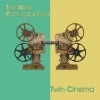 The New Pornographerssound friendly and homey, and listening to Twin Cinema reminds me ofall those times I've attended carefully-planned parties thrown byfamilies of slightly tipsy identical twins.
The New Pornographerssound friendly and homey, and listening to Twin Cinema reminds me ofall those times I've attended carefully-planned parties thrown byfamilies of slightly tipsy identical twins. Matador
Vancouver's super-group has released their third album of jangly,beautiful, meticulously-crafted pop. It's joyful. It'sheartfelt. Every note is perfect, every beat is in lockstep,every instrument has been equalized for maximum integration; it's likelistening to a warm diamond, or an outtake from a George Martinrecording session...one starring a lot of musicians with endless ideasand a fondness for diluted psychedelia. But when theperfection of it all becomes cloying (especially the crispness of theinstruments and the hey-hey "sing-along" style of the vocals), or whenthe lyrics get too annoyingly ambiguous and arty-farty, it's still hardnot to enjoy what Twin Cinema strives to be and achieves: an album ofpop songs which just plain sound good.
samples:
Read More
- Administrator
- Albums and Singles
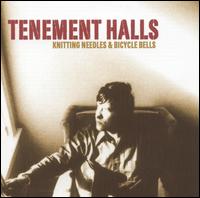 This is the first solo album from former lead for Rock*A*Teens, a bandso good that they will be forever underrated no matter how many times they’repegged as the archetypal underrated band.
This is the first solo album from former lead for Rock*A*Teens, a bandso good that they will be forever underrated no matter how many times they’repegged as the archetypal underrated band.Merge
People will pan this record. The title is pretty bad; even the bandtitle I don’t really like. Probably it should have been called “ChrisLopez” because this is Chris Lopez’s music, just like all thosebrilliant Rock*A*Teens albums. The Rock*A*Teens who haunted my youth,who like O’Connor and Faulkner and Walker Percy and Barry Hannah had anew world language to create but hadn’t yet because everything from theSouth happens that way. Who came from some imagined Cabbagetown outsideAtlanta with nothing but burned-out cars, streets full of shingles andthe only roofed structures the empty airplane hangers where teenscovered in reverb blasted science fiction rockabilly up to streetlightsmistaken for spotlights that were in fact searchlights, as theDestroyer’s one-sheet would have it. Eventually the teens grew out of“I’m Your Puppet” covers and into reinterpreting the classics throughan even foggier lens, meant to include southern soap opera romantics,abstract car accidents and huge aerial visions of the American state,macro-dramas condensed into 18’s white-boy soul stretches and yelpedout as if this-here-were the last song he/I will play and you/I willever hear. The band was struck down, and Lopez stayed on. Once he was“doomed,” as Bejar would have it again, but today he is still alive.Tenement Halls are no teenage tenement film reel. There is notelevision; no one is hunched over bad cooking; no one is beaten orbeating; no corpse goes weeks without being noticed. It sounds like theRock*A*Teens woke from their dream, Lopez got sad about it, so he’swriting songs to ignore it. Every song here is about love and duration;every voice in every song is love-sick. There is less of the teenagecamaraderie gung-ho-we’re-doomed! atmosphere, less concern for what’soutside that window. Songs about Charlemagne and swifts coming homecover a man’s version of love, fitted to Memphis traditions, with theair of Byzantine myth. Lyrics are simpler, much less ambitious thatLopez’s days with the Teens, even at their youngest, but, somehow, theyfeel more genuinely desperate. There are less theatrics and lessreverb, but you can hear the voices of teens grown up and still in thesame place; it’s sad but an essential part of that legacy. It’s lessfun; there’s less escape, less songs about AM radio, death jazz orCherry Red compilations, despite the title’s easygoing. Maybe havingextreme reverence for the Rock*A*Teens is necessary for enjoyingKnitting Needles; maybe it is a maturity issue. All I know is that timeis such a part of these lyrics that it’s impossible not to think abouta past with this music, any past. That’s fine; I wouldn’t have wantedit came without a fight anyway. Keep on, Christopher Lopez, you arestill needed. Bonus: even though the record was played and producedalmost entirely by Lopez, it’s still got some of thatwall-of-sludgy-reverb-Rock*A*Teens sound.
samples:
Read More
- Administrator
- Albums and Singles
 Released on UnitedDairies in 1984, Hausmusik is part ofa dramatic transitional period for Tietchens in which he abandons the vintagespace-age lounge music of earlier releases (see all the brilliant, trulyunclassifiable major ones reissued by Die Stadt) for a more spatially adaptabletechnique, far from the pop format and owing more to the sound and vision nowinsufficiently classified as early industrial music.
Released on UnitedDairies in 1984, Hausmusik is part ofa dramatic transitional period for Tietchens in which he abandons the vintagespace-age lounge music of earlier releases (see all the brilliant, trulyunclassifiable major ones reissued by Die Stadt) for a more spatially adaptabletechnique, far from the pop format and owing more to the sound and vision nowinsufficiently classified as early industrial music. Sixth in Die Stadt’s commendable Tietchens reissue project, Hausmusik enjoys something of a mythicalstatus within the artist’s overwhelming body of work, alongside otherlong-out-of-print releases like his series of Terry Burrowscollaborations. Still a young label, U.D. releases up to thispoint reflected more than ever the DIY spirit of Stapleton’s enterprise, themusic rooted in kitchen sink sound sourcing, abrupt cuts, and dense swaths ofprimitive acoustic noise, watermark: Insectand Individual Sliced. With Hausmusik, Tietchens essentially dropsthe first truly stoic and sophisticated release on the label, beginning thecrescendo that would produce the first singular NWW works. Inside the liner notes of this reissue a notein facsimile from Stapleton to Tietchens: “I nearly fainted, never before haveI heard music which so touched my heart…have you had classical training?” The idea of “classical training” going intoan earlier Tietchens album like Biotopis laughable in the best way, but Stapleton’s question illustrates the greatdivergence taking place on Hausmusik. The “dramatic transition” means a droppingout entirely of the retro atmospheres and quirky synth-play that madeTietchens’ first recordings by turns humorous and unsettling. Their replacement is an acetic environmentflowing out from this record as if it had existed for millennia, a carnallandscape with none of Stapleton’s early cheekiness and all of his texturalmastery. The sound is a broad-strokedcombination of stringed instrumentation, accordion, abrupt concrète tapetwisting, and dying electronics, grouped and mashed through effects into adense, effervescent layer. The hollow,cold-metal-in-space vibe of the earlier “pop” albums is now a craggy, petrifiedprimitive. Those familiar withmid-period Tietchens will notice certain rough edges to the mix, excessivetouches, and abrupt changes or endings later to be ground down, but these canalso be a source of appeal and work nicely to bleed the obvious excesses of hisearlier releases into new forms. Accordion flourishes in “Volkafest” recall Biotop-era bounciness but are buried in thethick airs of more powerful transmissions, sounds of a whining earth. “Studie für Klavier” might’ve been recordedyesterday, perfect drone for the exorcism-folk trend. Tietchens’ experimentation with naturallyresonant instruments shows itself on Hausmusikfor the first time, and it’s no wonder Stapleton heard a kindred spirit atwork. The bonus tracks, which most fansof late 80’s-onward Tietchens will dismiss as sounding too “improvisational” orsome shit, especially sculpt the artist’s ear as something in tune not just tothe sound’s ghost after optimum distortion, but to the spaces between atrilling scraping, to the movement of a hand as mapped by the quiveringfrequency structure one half-step too quick or one-notched frequency too shrillfor your automatic interpretive listening “method.” Today, as Tietchens seems more concerned withexorcizing the ghosts latent in the digital pulverizing of existing sources,it’s time to revisit some of his less-meta constructions. Titles like “Studie für Glasspiel” and“Studie für B-A-C-H” signify simple means expanded or exploded across a thoughtprocess bent on discovering new soundworlds within inches of thoseimmediate. I can hear many thingsfloating in with this music, the least of which is Tietchens’ next two decadesas a composer and figurehead. U.D.freaks will no doubt already have jumped on this, but it also makes the perfectintroduction to the artist for new listeners. Bonus: another beautiful packageby Die Stadt, including large glossy prints of Tietchens’ original cover artand the Babs Santini art of the first pressing.
samples:
Read More
- Administrator
- Albums and Singles
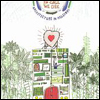 Thoughthey are comfortable in a number of guises, be it twee girl-boycrooning, electro-clash, or baroque chamber pop, Architecture inHelsinki clearly have trouble staying focused on one idea, and thoughit can be an endearing, it gives the album a feeling of beingunfocused.Bar-None
Thoughthey are comfortable in a number of guises, be it twee girl-boycrooning, electro-clash, or baroque chamber pop, Architecture inHelsinki clearly have trouble staying focused on one idea, and thoughit can be an endearing, it gives the album a feeling of beingunfocused.Bar-NoneArchitecture in Helsinki is eight members, all of whom play several instruments, coming together tomake pop music that bursts at the seams with restless enthusiasm.“It’5” features sticky sweet “oh’s” and “ah’s” that ride along a musichall beat. The Australian octet’s penchant for creating music that isat once playful and skilled is on clear display on “In Case We Die (Pt.1-4),” where goofy synthesizers slowly fade into marshal drumming andmournful violins while the band shout the chorus amid the sound ofbursting fireworks. Elsewhere, a healthy pilfering of the past informsmany of the songs on In Case We Die. “Do the Whirlwind” sounds likeWham! (Wait, come back!) with horns and intricate percussion. Individual songs work well, but as a group, these songs havetrouble forming one musical identity. Ultimately, it’s the charisma ofindividual songs that power this album. “The Cemetery,” which clocks inat barely over two minutes, is the strongest pop song of the batch andis the best distillation of Architecture in Helsinki’s musical forté.The peppy guitars and call and response vocals of the verse meldseamlessly into the breakneck new wave inspired chorus, allowing thesong to be infectious and accomplished all at once. Though there havebeen a glut of adventurous pop bands in recent years, Architecture inHelsinki manage to separate themselves from the pack with their adeptsong writing skills and a sense of whimsy that is sorely lacking inmany of their peers.
samples:
Read More

